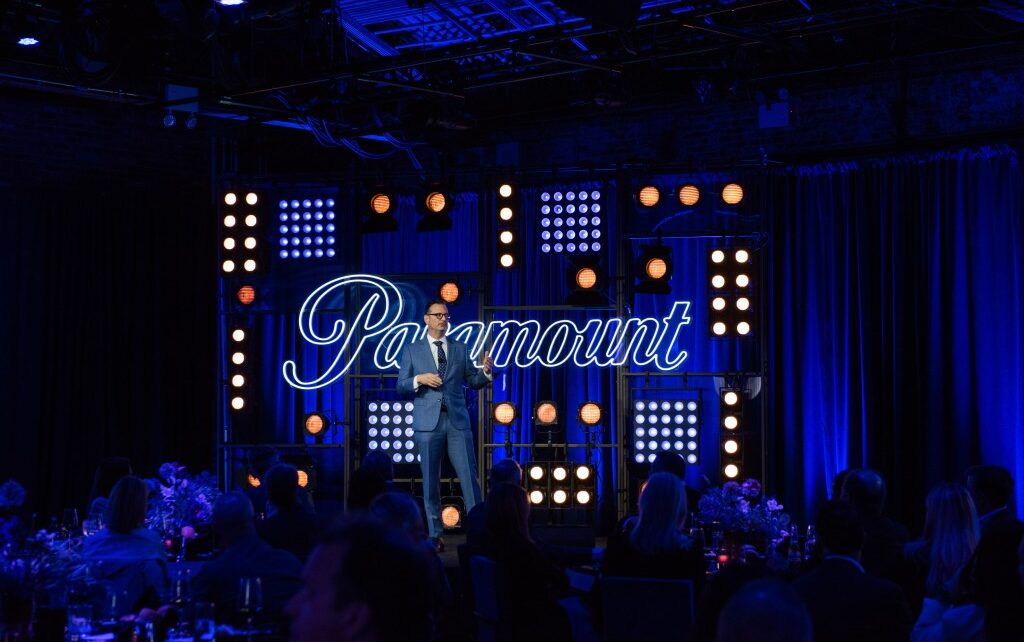Getting to Carnegie Hall requires, as the old joke goes, practice, practice practice. Walking away, it would seem, is significantly easier.
Paramount Global, a media company that has over the past decades come to emblematize the entertainment industry’s annual “upfront” sales session in no small part because of its presentations at the New York landmark, this year surprised many by walking away from holding one. Chances are the company won’t be returning in the near future.
“We are not going to go back to the old way of doing things,” says John Halley, Paramount’s president of advertising, in an interview.
Halley is presiding over his first upfront — a weeks-long haggle over ad inventory for the networks’ next cycle of programming — after having succeeded longtime executive Jo Ann Ross. He has generated chatter across the industry by leaving behind the glitzy Wednesday-afternoon showcase started years ago by Paramount’s CBS. In its time, CBS’ Carnegie Hall event grew to symbolize the networks’ efforts during their annual week of publicity aimed at wooing Madison Avenue and has featured everything from live songs by The Who to a farewell from David Letterman.
So valuable is a perch during upfront week that Netflix came in and snatched up the time Paramount abandoned. NBCUniversal, YouTube, Disney, Fox and TelevisaUnivision will also mount individual exhibitions starting May 15. Only the CW, the small broadcast network recently scooped up by Nexstar Media, is following Paramount’s practice. Nexstar will hold a press conference on Thursday of the week, but invited media buyers and clients to a New York dinner in recent weeks, rather than putting on a big show.
Halley is betting Paramount’s more intimate efforts will play well when there is little room for them to fail. The company has been funneling millions of dollars into the creation of new streaming content, and saw traditional revenue, including advertising, from its TV operations fall 8% in the first quarter. Paramount Global cut its dividend to 5 cents a share from 24 cents.
There are also questions about how robust this year’s upfront is going to be. Media-buying executives say they believe advertisers are eager to hold back on ad spending, particularly as fears of a recession continue and as concerns about the current Hollywood writers’ strike tamps down enthusiasm around the new content the networks are promising for fall.
In an era when more TV viewers are migrating to streaming video, however, Halley argues that the upfront’s traditional spectacle no longer works. As advertisers grapple with consumers’ new interactions with programming and different ways to measure them, says Halley, “it is becoming increasingly hard for buyers to navigate, and what we are focused on is how we can make the complex simple.”
While other media companies are still getting ready to launch their extravaganzas, Paramount has held nine different dinners with various media agencies, says Halley. Just like the big Carnegie Hall show, there have been allusions to popular culture (invitees could look at ‘Star Trek” uniforms or Tom Cruise’s wardrobe from “Top Gun: Maverick”) and appearances by Paramount celebrities ranging from Stephen Colbert to actors from “Yellowstone.”
The smaller events, which take place earlier than usual in the upfront negotiation cycle, are about four hours each, says Halley. In total, the nine meetings represent “36 hours of engagement with our most important clients, versus a thing that happens on one evening. Everyone is there for one or two hours and at the afterparty, it’s too loud to talk.” The belief is that the intimate meetings will “resonate” more with advertisers, says Halley, while the week of bigger shows will overwhelm any one network’s “share of voice.”
The next several weeks of haggling will tell whether Madison Avenue heard Paramount’s pitch.
Read More About:
Source: Read Full Article

